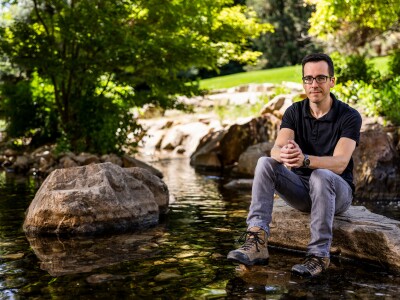A new study concludes that ongoing efforts to cut the costs of a program that provides low-income children with health insurance would send more kids to the emergency room and increase the total cost of care by $2,121 per child each year.
Brigham Young University professor Richard Butler
The question that Butler helped to answer is what happens when an effort to cut the costs of State Children’s Health Insurance Program (SCHIP
“This research shows that it is more expensive to society to leave them uninsured,” said Butler, a professor of economics. “SCHIP sees their costs go down, but that is not the whole story.”
During the year 2005 alone, every state
Other government programs pick up most of the tab for uninsured kids, Butler said. Hospitals would eat the remainder of that cost and could possibly pass it on to consumers or shareholders.
“It’s like squeezing one end of a balloon where you observe SCHIP costs going down and not noticing the uninsurance costs expanding at the other end of the balloon,” Butler said.
The cost increase reflects a shift from routine visits to a doctor or clinic to emergency care. A child that disenrolled from SCHIP and became uninsured was 17 percent less likely to visit a doctor. Another contributing factor is that children who became uninsured had longer hospital stays than children who continued enrollment in SCHIP.
The study tracked 43,313 uninsured children and 168,722 children enrolled in SCHIP and living in the metropolitan area of Phoenix, Arizona. The results of the study remained the same when limiting the analysis to only white or only Hispanic children, which leads Butler to believe that he would find similar results here in Utah.
Hospitals, clinics, and the local Medicaid program all shared data to track these children’s health usage and insurance status over 12 months, a difficult feat in itself. For each type of visit, the researchers knew the exact diagnosis, the treatment prescribed and insurance status. What’s more, the researchers also could distinguish between the amount charged and the amount actually paid. The $2,121 per child estimate is based on actual payments.
“There’s no other source of data like this,” Butler said.
After earning a Ph.D. from the University of Chicago, Butler taught at Cornell for four years before settling at BYU. He also occupied the C. Arthur Williams insurance chair at the University of Minnesota for six years. He says that researching this topic is a rewarding part of his career.
“There’s been a lot of press on the impact of insurance coverage versus uninsurance,” Butler said. “It is nice to know exactly how important health insurance is for children.”
Writer: Aaron Searle






